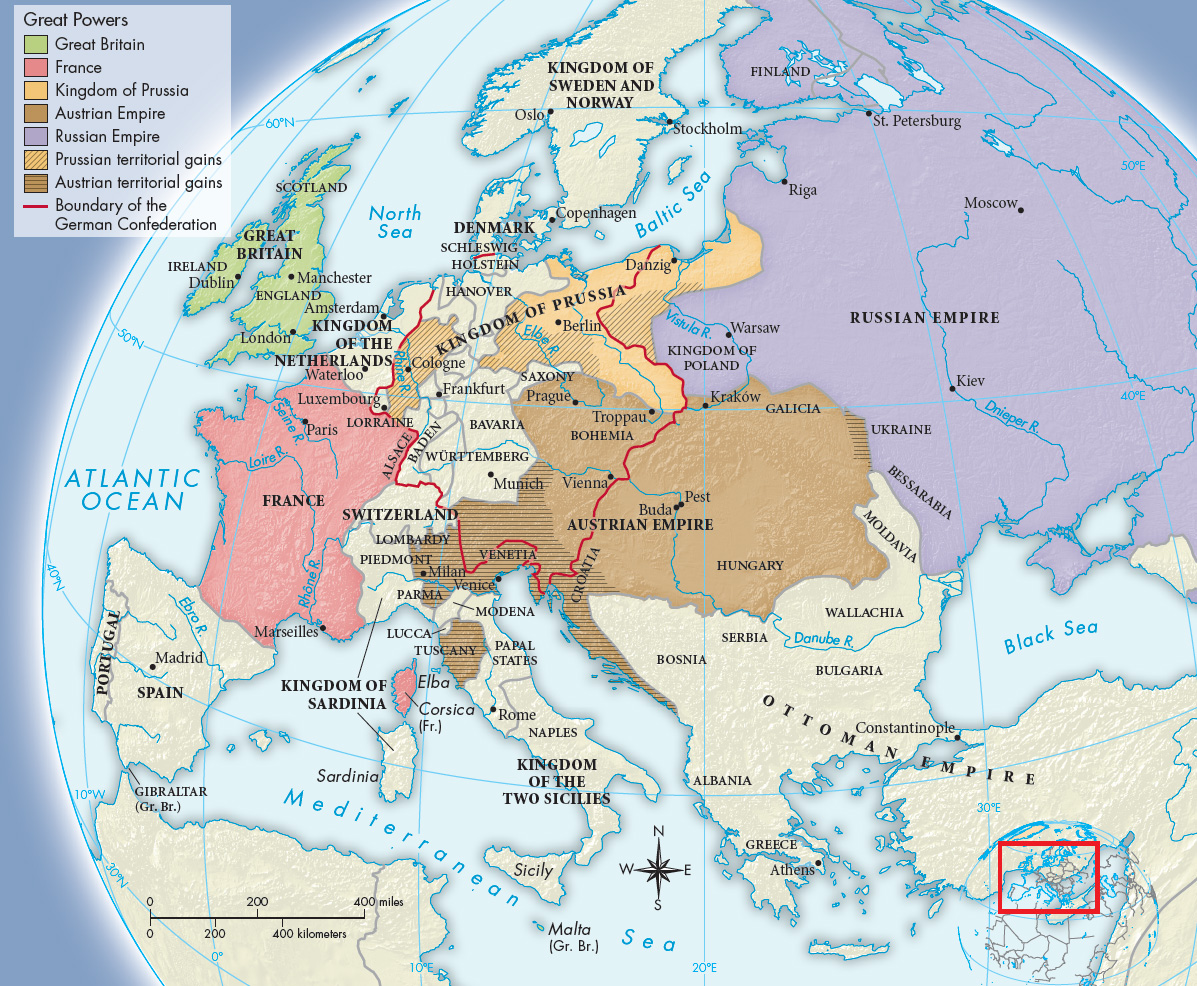A History of Western Society: Printed Page 684
A History of Western Society, Value Edition: Printed Page 688
The Aftermath of the Napoleonic Wars
How was peace restored and maintained after 1815?
The eventual eruption of revolutionary political forces was by no means predictable as the Napoleonic era ended. Quite the contrary. After finally defeating Napoleon, the conservative, aristocratic monarchies of Russia, Prussia, Austria, and Great Britain — known as the Quadruple Alliance — reaffirmed their determination to hold France in line. Other international questions remained unresolved. Even before Napoleon’s final defeat, the allies had agreed to meet to fashion a general peace accord in 1814 at the Congress of Vienna, where they faced a great challenge: how could they construct a lasting settlement that would not sow the seeds of another war? By carefully managing the balance of power and embracing conservative restoration, they brokered an agreement that contributed to fifty years of peace in Europe (Map 21.1).

MAPPING THE PAST
ANALYZING THE MAP Trace the political boundaries of each Great Power, and compare their geographical strengths and weaknesses. What territories did Prussia and Austria gain as a result of the war with Napoleon?
CONNECTIONS How did Prussia’s and Austria’s territorial gains contribute to the balance of power established at the Congress of Vienna? What other factors enabled the Great Powers to achieve such a long-lasting peace?